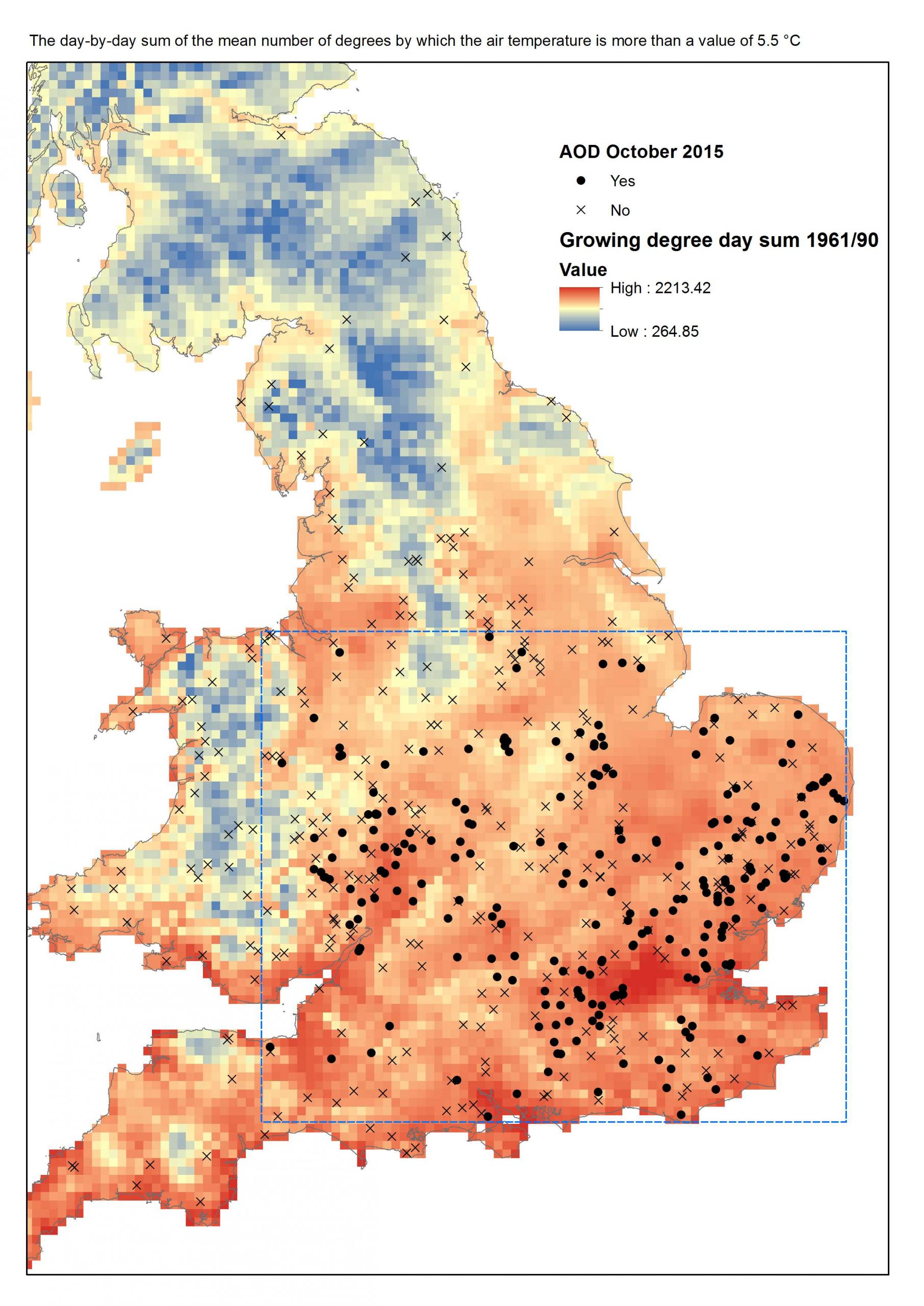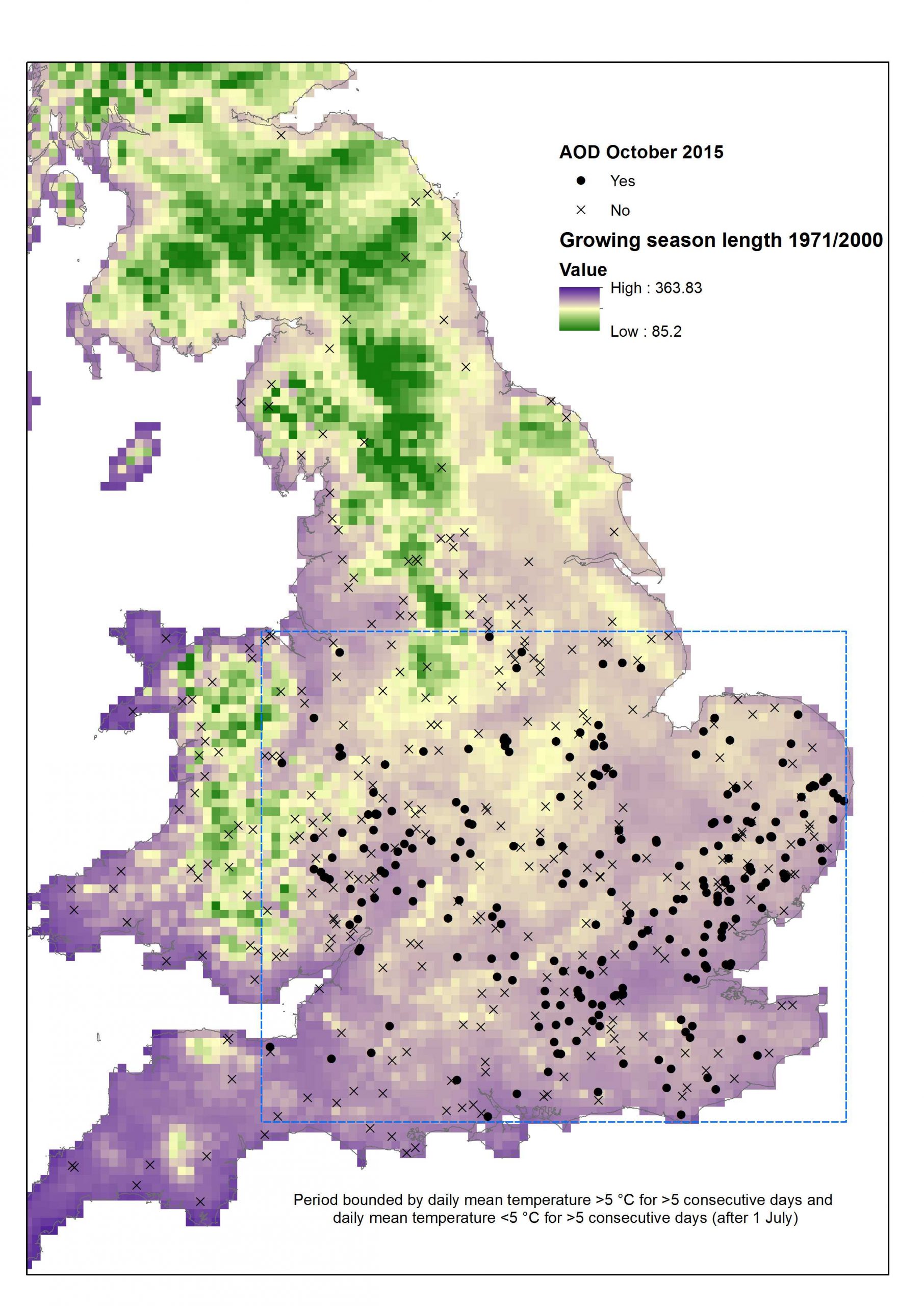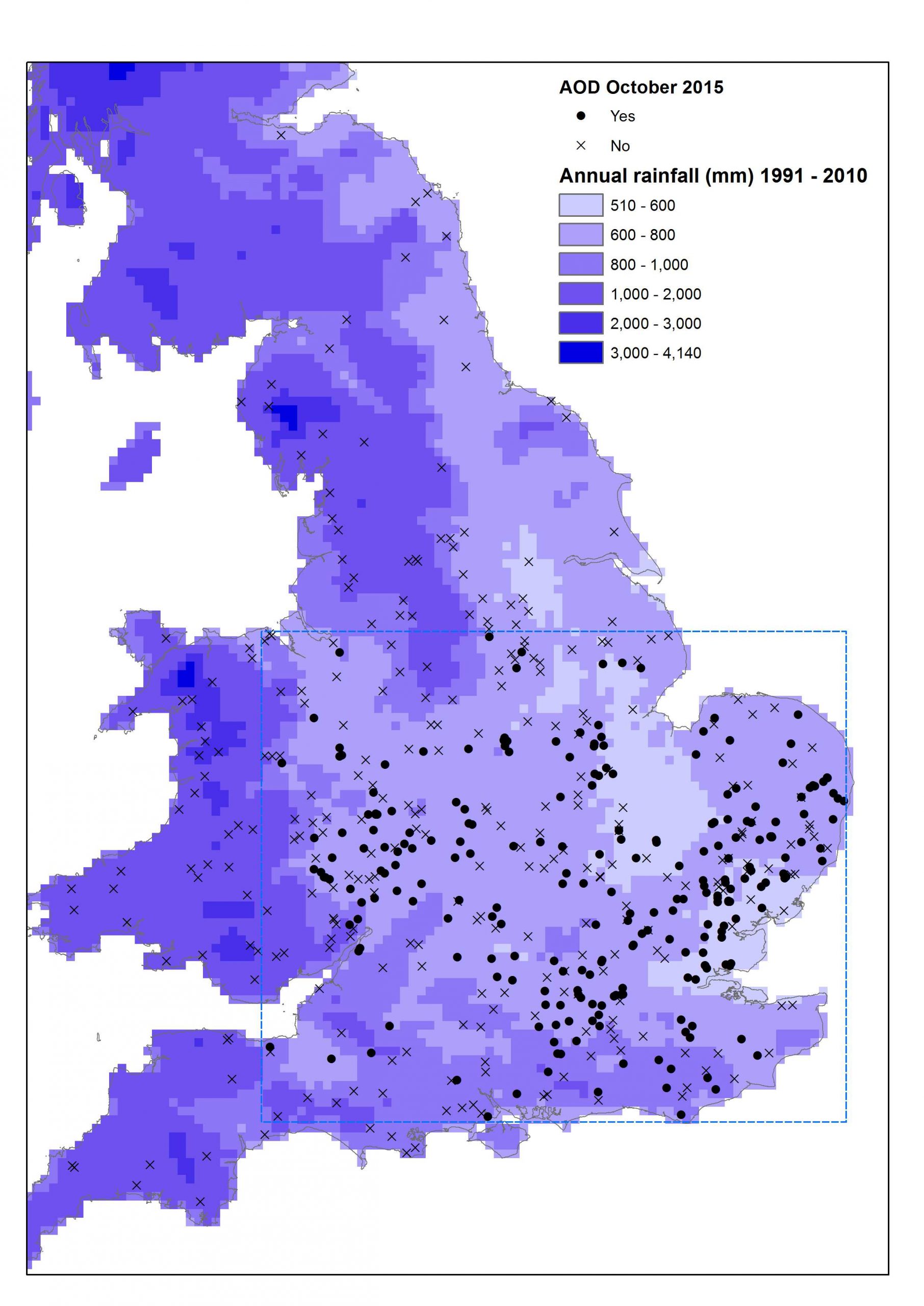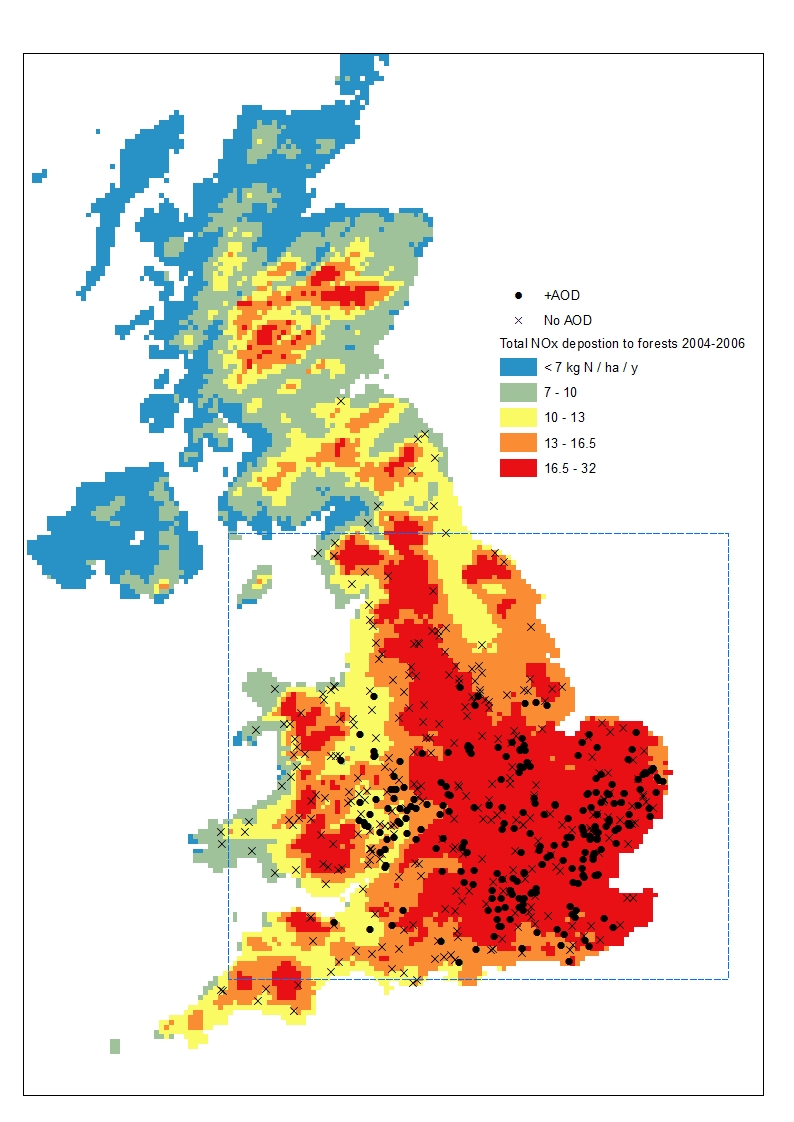The incidence of acute oak decline is on the increase as it spreads across Britain
Acute oak decline (AOD) is a new disease mainly affecting native oak trees in Britain first observed here 30‑35 years ago. It is most prevalent on English or pedunculate oak (Quercus robur) and sessile oak (Quercus petraea), thousands of trees are affected, many die.
Recent spatial epidemiology studies show that the disease can spread from tree to tree and that newly infected trees cluster around those already infected.
It is necessary to know where the disease occurs at the landscape level as well as its distribution within sites. With this knowledge in hand, we can map the distribution of AOD, monitor spread of the disease and predict at risk areas.
Knowing the distribution of the disease on the landscape also enables us to find out whether there are any correlations between the occurrence of the disease and particular environmental effects. Currently FR is analysing soil properties and chemistry together with leaf chemistry to find out whether particular environmental factors are associated with trees more susceptible to AOD. First results of analyses of correlations between AOD and certain factors at the landscape scale indicate that there are strong correlations between the occurrence of AOD and rainfall, air temperature and elevation (height above sea level).
Rainfall: There was a significant correlation between the occurrence of AOD and rainfall. AOD tends to occur in dryer parts.
Temperature: There was a significant correlation between the occurrence of AOD and temperature. AOD tends to occur in warmer parts where longer growing seasons are experienced and does not occur in cold parts of the country.



Atmospheric pollutants: At the landscape level occurrence of AOD is correlated with high levels of atmospheric dry nitrogen (NOx).

Dry NOx deposition
There are also correlations with AOD occurrence and low levels of sulphur.
Trees affected by AOD tended to occur on soil types that were seasonally waterlogged or that had high clay content.
Current research is further investigating these relationships at tree scale by comparing healthy and diseased trees at different sites in England.
This research will lead to both proactive and restorative management through amelioration and site management e.g. drainage and improved soil condition.
